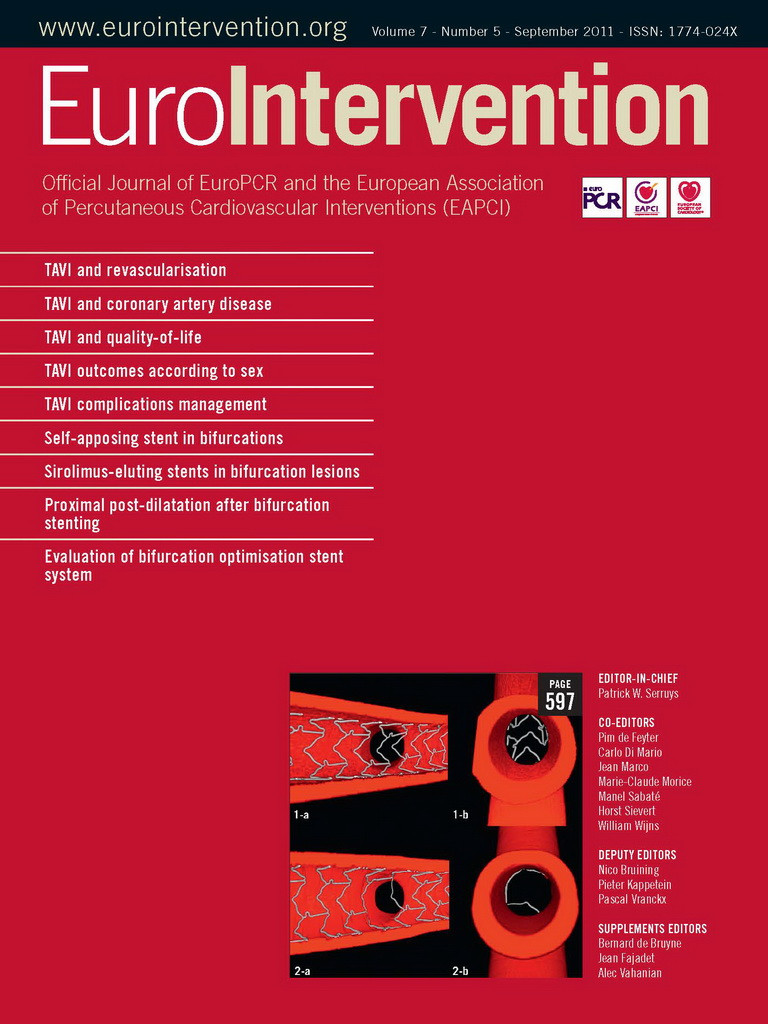Dear colleagues,
Today’s world moves quickly; the identity we established years ago evolves at a faster and faster pace, and what we do and who we are reflects the speed at which information is transferred and perceived through our new mediums. In order to keep up with these changes we need to evolve –or at least react– as quickly as the environment around us: something which is true for us as individuals, and true for our journal EuroIntervention. We have arrived at a moment in the history of the journal when we need to adjust our course in order to be more responsive, more reflective of these changes we are witness to. To do this we see a three-fold path which, together, will allow us to respond to the evolution of our profession.
The first is the editorial board of the journal itself. The board is constantly evolving due to natural occurrences, which allows us to take advantage at a fundamental level of how it operates. Through natural attrition –some of our Editorial Board members are retired or are about to retire in the near future, others have expressed their desire to phase-out their commitment to the journal– offering us the opportunity of rewarding a younger generation whose great loyalty and commitment has immensely contributed to the reviewing process, as well as further focussing our international editorial editors in a way to reflect their own involvement, and implicate their regions in a more dynamic process.
Secondly, we will increase our meeting schedule to take advantage of our presence internationally. Until now we only had international board meetings at EuroPCR, but following the example of the European Heart Journal, we plan to systematically have meetings of the International Board of the Journal at the American Heart Association, American College of Cardiology, the TCT as well as the ESC to be able to pinpoint papers and trends of interest at these meetings, focusing on novel information that the Editorial Board considers for priority publication.
In addition, we are creating the structure where any of the meetings from PCR family, such as EuroPCR, AsiaPCR, GulfPCR and PCR London Valves, will be channelled to the journal at a very early stage. Automatically the speaker will receive an invitation to share their key-note speech, late breaking trials, “How Should I Treat” sessions or clinical data and hotline sessions with our journal.
We are working as well with the direction of the EAPCI to encourage noteworthy papers by the distinguished members of the association to come to EuroIntervention as a journal of first choice, with the promise of quick publication.
All of which brings us to the third and crucial point in our re-organisation, the creation of a mechanism which allows us as a journal to be reactive to the opportunities described above: the ability to determine, review, edit and publish an article in the shortest delay possible.
Obviously, we have seen from time to time papers, information, new scientific facts that the Editorial Board sees as priority for publication. This, plus the re-organisation we described above requires areactivity which we have, until now treated individually, case-by-case, rather than using an overall and adapted mechanism. What we need is is a kind of “fast track”, to use a well known technique of our mother journal EHJ, however, we would like to emphasis that at variance with the EHJ, our “fast track” will be a unilateral decision of the Board and not the choice of the authors. In some way, we will be more arbitrary, since we will not open the doors simply to authors who consider their message to be highly important. While it is extremely difficult to decide which kind of information deserves and merits this type of consideration when a paper treats as yet unknown information on the safety of a treatment, device or drug, or when we are aware that an article represents a sort of competition between scientific teams or journals in a world that has become increasingly competitive, it is clear that such papers need to be considered outside more traditional review methods.
In setting up this mechanism we do not want to be called copycats, accused of mimicking others or misusing the term “fast track”, therefore we elect to call our mechanism by our own terminology, “Editorial Expedited Publication” or EEP. Yes, we could call it only “Expedited Publication”, EP, but we do not want it to be confused with electrophysiology, and the other suggestion, “Board Editorial Priority”, BEP, sounded a bit peculiar to us with perhaps curious connotations, therefore we selected our new term EEP.
These so-called “EEP publications” will be marked by a specific symbol and logo. The initial editorial decision will be sent within ten days of submission of the manuscript and if the paper is accepted, the manuscript will be published online within seven days. With our vast resources: a monthly print journal, an established interactive online presence as well as a network of dedicated and active collaborators, the EEP –Editorial Expedited Publications– will play an essential role.
All three aspects together –the invigorated Editorial Board with arenewed and dedicated mission to be actively present at international meetings for EuroIntervention, backed up by EEP, the mechanism that will allow us to be responsive to the community in a timely fashion– all will help us continue to be an active part of our community. It will allow us to have a role in forging the ongoing dialogue, rather than simply following it, and help all of us keep up with the rapid pace of the world and our profession today.

